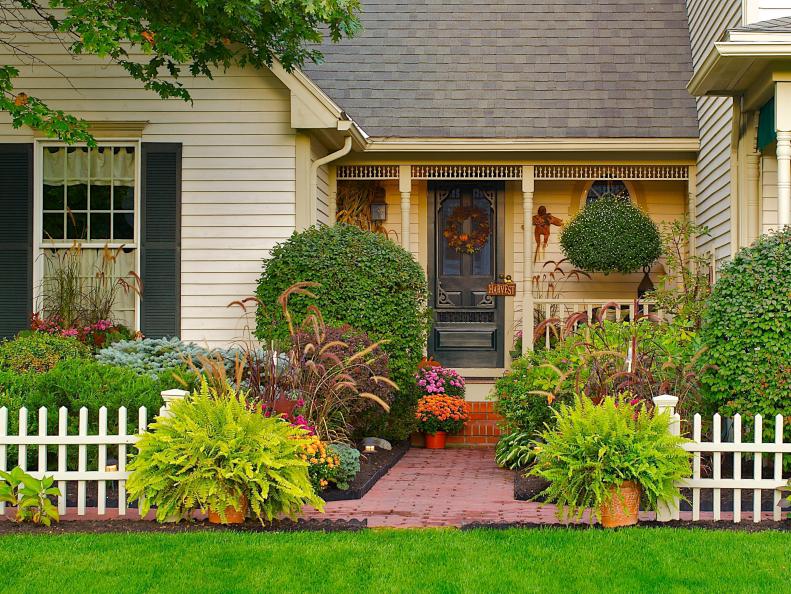1 / 10
Photo: Photo by Janet Loughrey
Change the look of the garden throughout the year. Give your entry garden seasonal updates with bulbs in spring, annuals in summer, mums in fall and evergreens for winter. Containers can be moved around to alter the look of the garden.
At the home of Rob Saba and Mark Hogan in Saratoga Springs, N.Y., mums (Chrysanthemum), ornamental kale (Brassica oleracea) and grasses (Pennisetum setaceum 'Rubrum') signal fall in window boxes, hanging baskets, and among fall-blooming perennials and established foundation plants. Decorative accents like cornstalks, dried flower wreaths and country-style ornaments complete the inviting harvest display.
At the home of Rob Saba and Mark Hogan in Saratoga Springs, N.Y., mums (Chrysanthemum), ornamental kale (Brassica oleracea) and grasses (Pennisetum setaceum 'Rubrum') signal fall in window boxes, hanging baskets, and among fall-blooming perennials and established foundation plants. Decorative accents like cornstalks, dried flower wreaths and country-style ornaments complete the inviting harvest display.









